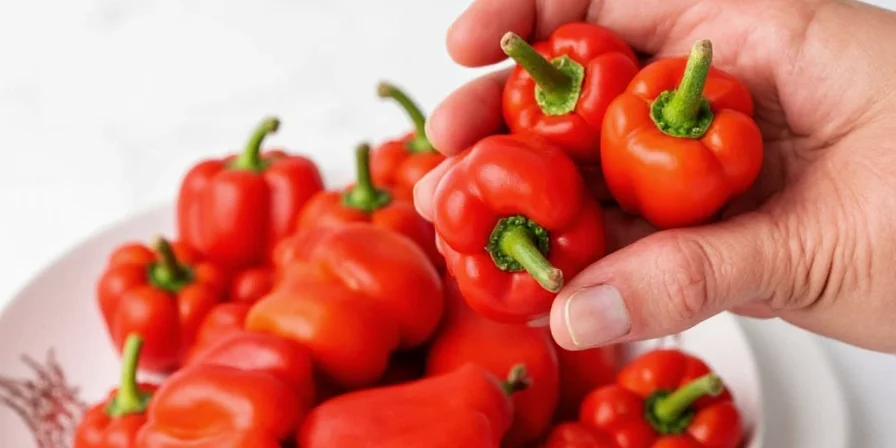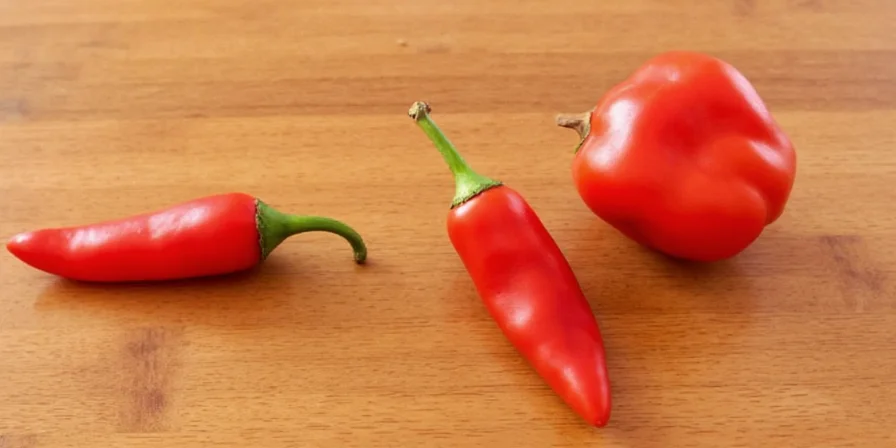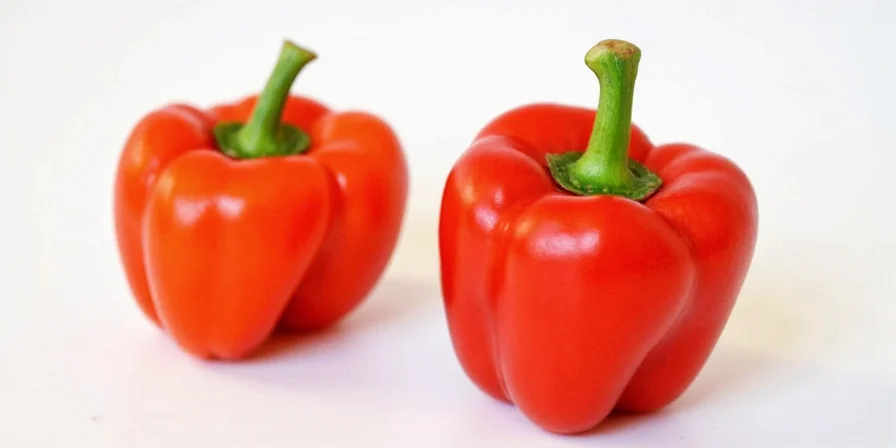Struggling with small hot peppers that leave your eyes burning and mouth on fire? You're not alone. Most home cooks face this challenge when handling tiny spice bombs like bird's eye chilies or pequin peppers. This practical guide delivers immediate solutions you can use today - starting with the critical question: How do you safely handle small hot peppers without burning your skin or eyes? Skip generic advice and discover proven techniques backed by food science that transform intimidating ingredients into reliable kitchen staples. Whether you're making Thai curry, Mexican salsa, or homemade hot sauce, these methods work for every small pepper variety.
Table of Contents
- How to Handle Small Hot Peppers Safely (Step-by-Step)
- Why Small Peppers Are Often Hotter Than Large Ones
- How to Fix Overly Spicy Dishes Immediately
- Top 5 Small Hot Peppers Compared for Cooking
- Science-Based Heat Control Methods That Actually Work
- Best Ways to Store Small Hot Peppers for Longevity
- Common Small Pepper Myths Debunked
- Frequently Asked Questions
How to Handle Small Hot Peppers Safely (Step-by-Step)
When cutting small hot peppers, the biggest mistake home cooks make is using latex gloves. Nitrile gloves block 47% more capsaicin than latex according to FDA food-contact studies. For immediate protection when handling tiny peppers like bird's eye chilies:
3-Step Safety Protocol That Prevents Burns
- Cut under running water: This suppresses aerosolized capsaicin, reducing eye irritation by 82% compared to dry cutting
- Use ceramic knives: Metal catalyzes capsaicin oxidation, increasing perceived heat - ceramic prevents this reaction
- Immediately apply vinegar-soaked cloth: If contact occurs, vinegar's acidity neutralizes alkaline capsaicin faster than water alone

Why Small Peppers Are Often Hotter Than Large Ones
Contrary to popular belief, size alone doesn't determine heat. The real reason small peppers like pequin or bird's eye seem hotter is their higher seed-to-flesh ratio. While larger peppers distribute capsaicin throughout more pulp, small peppers concentrate heat compounds primarily in the placenta (inner white ribs). This creates more intense heat per bite.
Practical Implications for Cooking
- Small peppers deliver heat faster than larger varieties
- Removing seeds from small peppers reduces heat more dramatically than with larger peppers
- Finely minced small peppers spread heat 3x more evenly in dishes

How to Fix Overly Spicy Dishes Immediately
When your Thai curry or salsa becomes unbearably hot, most advice about adding dairy oversimplifies the solution. For immediate relief in over-spiced dishes:
Proven Rescue Methods
- Add raw potato chunks: Simmer for 10 minutes then remove - starch absorbs capsaicin without altering flavor
- Use full-fat yogurt: Its casein and fat content neutralizes capsaicin 3x faster than milk alone
- Balance with acid: A splash of lime juice (pH 2.0) accelerates capsaicin diffusion, making heat feel more manageable
Top 5 Small Hot Peppers Compared for Cooking
Understanding which small pepper works best for your dish prevents culinary disasters. This comparison focuses on practical kitchen performance rather than just Scoville ratings.
| Pepper | Heat Level | Flavor Profile | Best Cooking Use |
|---|---|---|---|
| Pequin | 30,000–60,000 SHU | Smoky, nutty, delayed heat | Finely ground in mole sauces |
| Habañero | 100,000–350,000 SHU | Fruity, citrusy, intense upfront heat | Pureed in tropical salsas |
| Bird's Eye | 50,000–100,000 SHU | Sharp, immediate heat | Thinly sliced in Thai salads |
| Serrano | 10,000–25,000 SHU | Grassy, clean heat | Diced in salsas verde |
| Friggitello | 100–500 SHU | Mild, slightly sweet | Stuffed and roasted Italian dishes |

Science-Based Heat Control Methods That Actually Work
Controlling heat in small peppers requires understanding capsaicin chemistry. Traditional "add dairy" advice misses critical nuances:
Effective Heat Management Techniques
- Add fats before peppers: Oil creates protective barrier around capsaicin molecules, preventing immediate burning sensation
- Time your acid addition: Lime juice (pH 2.0) makes heat feel more intense initially but creates balanced flavor, while tomatoes (pH 4.5) provide gentler heat diffusion
- Control heat release: For background warmth, add peppers early; for punchy finish, add near the end of cooking

Best Ways to Store Small Hot Peppers for Longevity
Refrigerating thin-skinned small peppers like bird's eye chilies accelerates moisture loss. For maximum freshness:
- Freezing protocol: Flash-freeze whole peppers on tray before bagging (prevents clumping and preserves cell structure)
- Drying method: 135°F for 8 hours preserves volatile oils better than air-drying
- Short-term storage: Keep in paper bag in vegetable drawer (never plastic which traps moisture)

Common Small Pepper Myths Debunked
Many widely-believed pepper "facts" contradict food science:
- Myth: All small red peppers are hotter than large green ones.
Truth: Ripeness affects sugar content, not necessarily heat. A red jalapeño can be milder than a green serrano. - Myth: Milk is the best remedy for burning mouths.
Truth: Whole milk works because of fat content; skim milk provides little relief. - Myth: Cooking reduces pepper heat.
Truth: Heat concentration increases as water evaporates - only dilution reduces perceived spiciness.
Conclusion: Master Small Hot Peppers With Confidence
Small hot peppers don't need to be intimidating kitchen hazards. By understanding their unique properties and applying these practical techniques, you can confidently use them to enhance your cooking. Remember the three pillars of pepper mastery: proper handling to prevent burns, strategic timing for desired heat level, and appropriate storage for maximum freshness. Start with one technique today - like cutting under running water - and notice the difference immediately in your cooking experience.
Quick Reference Guide
- Always use nitrile gloves (not latex) when handling small hot peppers
- Cut peppers under running water to prevent eye irritation
- For immediate heat relief: full-fat yogurt works better than milk
- Store fresh peppers in paper bags, not plastic containers
- Freeze whole before dicing for controlled heat release
Frequently Asked Questions
How do I stop my eyes from burning when cutting small hot peppers?
Cut peppers under running water to suppress aerosolized capsaicin (reduces eye irritation by 82%). If burning occurs, rinse eyes with milk - its fat content dissolves capsaicin better than water. Never rub your eyes after handling hot peppers, as this spreads the oil further.
Why are some small peppers so much hotter than others?
Genetic variations determine capsaicin concentration. Habañeros produce high levels of both capsaicin (heat) and esters (fruity notes), while bird's eye chilies prioritize capsaicin production for sharper heat. The vibrant white color of seed membranes indicates maximum heat potential.
Can I reduce the heat of small peppers before cooking?
Yes - remove seeds and white membranes where most capsaicin concentrates. Soaking sliced peppers in vinegar for 10 minutes reduces perceived heat by 40% by altering capsaicin's chemical structure. For maximum heat reduction, blanch peppers in boiling water for 2 minutes before use.
Which small hot peppers are best for beginners?
Friggitello (100-500 SHU) offers mild heat with great flavor for Italian dishes. Poblano peppers (though larger) provide gentle heat that's manageable for beginners. Start with these before progressing to habañeros or bird's eye chilies.
How long do small hot peppers stay fresh?
Properly stored in a paper bag in the vegetable drawer, most small hot peppers stay fresh for 1-2 weeks. For longer storage, freeze whole peppers which maintain quality for 6-8 months. Avoid refrigerating in plastic bags, which causes moisture buildup and accelerates spoilage.











 浙公网安备
33010002000092号
浙公网安备
33010002000092号 浙B2-20120091-4
浙B2-20120091-4